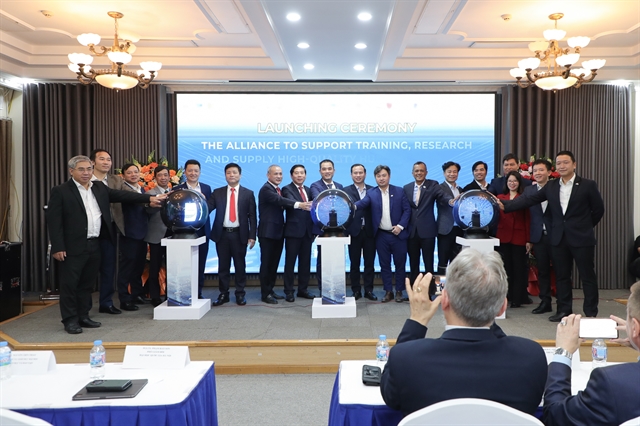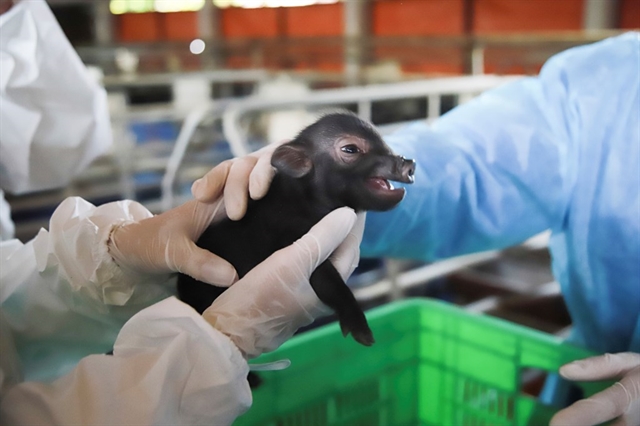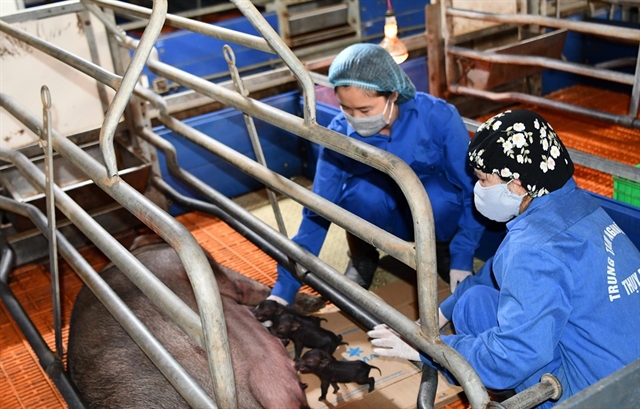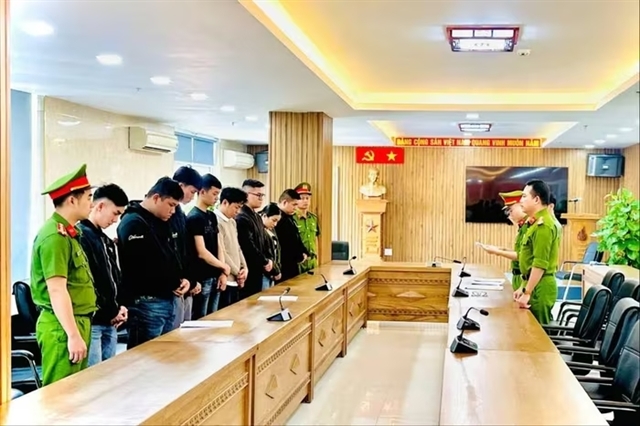 Society
Society

Four healthy pigs were born on March 10 using somatic cell nuclear transfer technology.

|
| The first pig born in Việt Nam thanks to the application of somatic cell nuclear transfer technology. Photo: Bnews.vn |
HÀ NỘI — Vietnamese scientists have for the first time successfully cloned pigs using the somatic cells of ear tissue.
Four healthy pigs were born on March 10 using somatic cell nuclear transfer technology.
Visiting the National Institute of Animal Sciences on Sunday, Minister of Agriculture and Rural Development Nguyễn Xuân Cường said this was an important breakthrough for the animal cloning sector of Việt Nam, proving the country’s science and technology’s role and position in the regional and the world.
The institute launched the project to study the cloning of pigs by somatic cell nuclear transfer technology in July 2017.
Head of the institute Doctor Phạm Công Thiếu said although the facilities and equipment were limited, Vietnamese scientists have strived to study and apply animal cloning technology.

|
| The pigs are taken care of by the institute staff. — Photo courtesy of the Ministry of Agriculture and Rural Development |
This outstanding achievement has opened up new research opportunities to apply animal cloning technology in breeding, preserving rare and valuable animals as well as creating livestock resistant to diseases and the impacts of climate change. It could also help to create cloned pigs for organ transplants in the future, he said.
Somatic cell nuclear transfer technology was successfully carried out for the first time in 1996 in the UK, where scientists created Dolly the sheep.
Minister Cường praised the efforts of the researchers of the institute for cloning the pigs, which make up a high proportion of Vietnamese food.
“Vietnamese scientists have been creative and determined to apply world achievements to develop Việt Nam’s own achievements in the context of limited equipment and facilities,” he said.
He asked the institute to review the process to strengthen the results and continue to study and uphold this technology to preserve native animals and develop livestock as part of the husbandry strategy. — VNS




